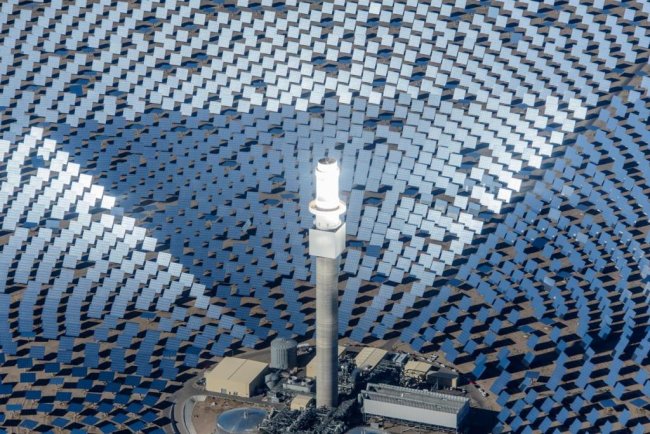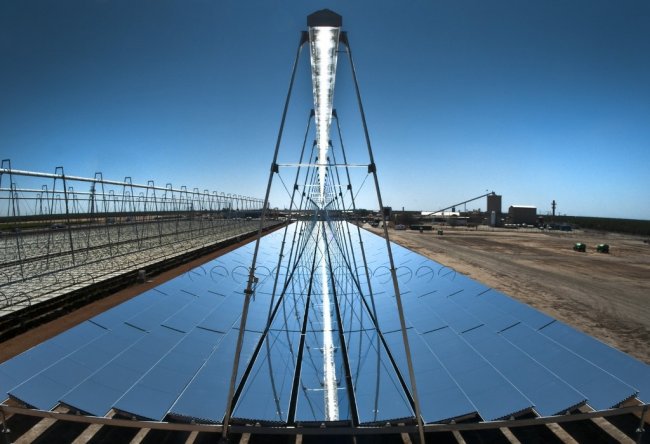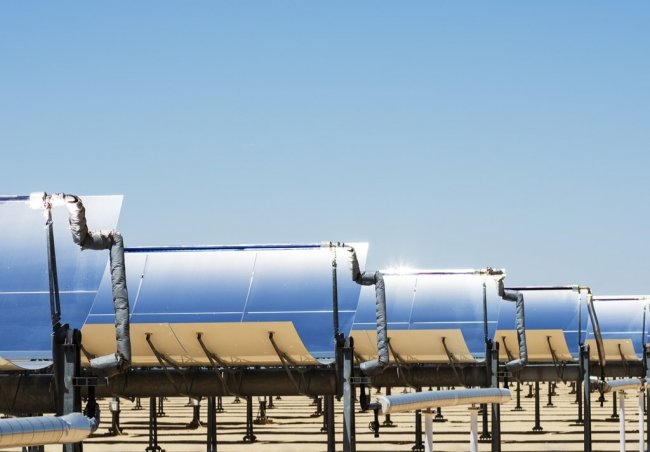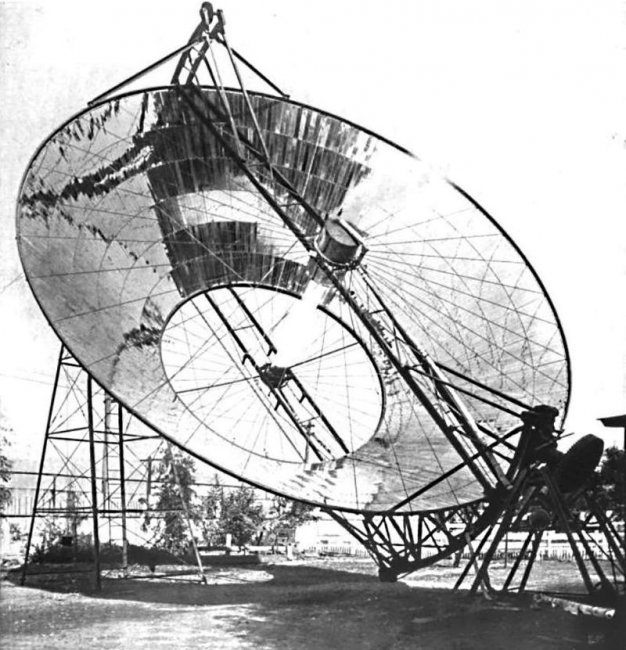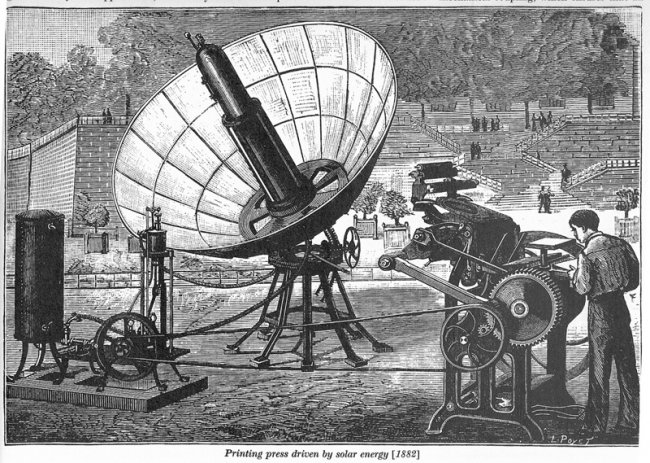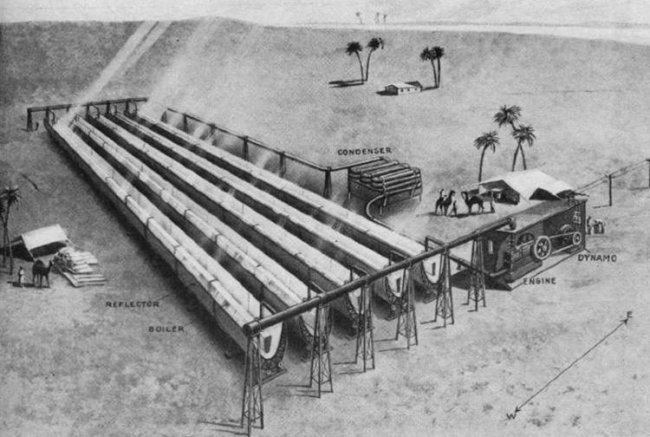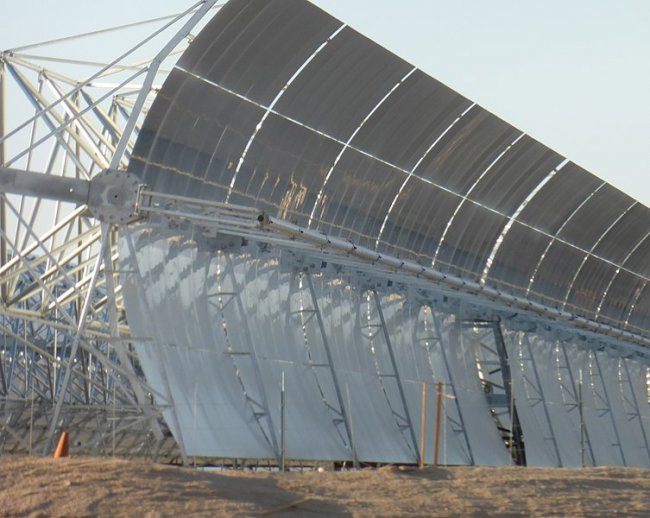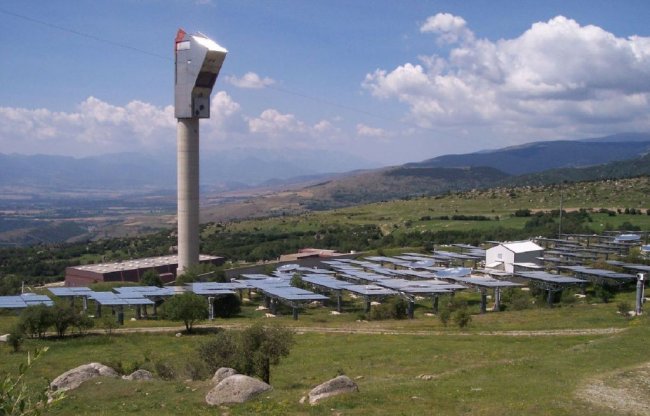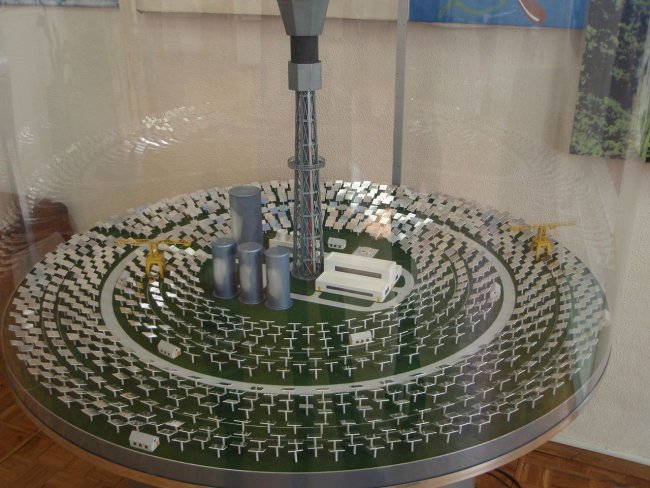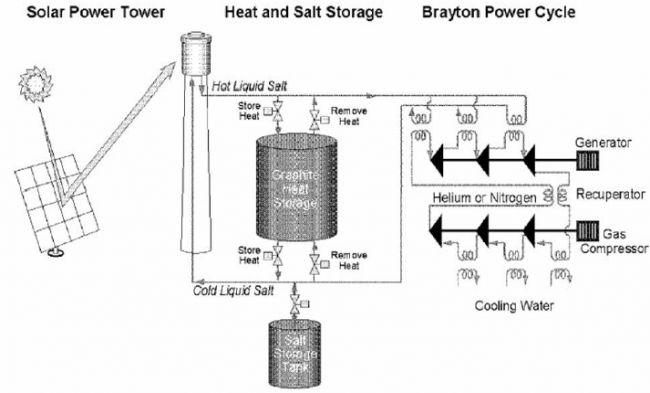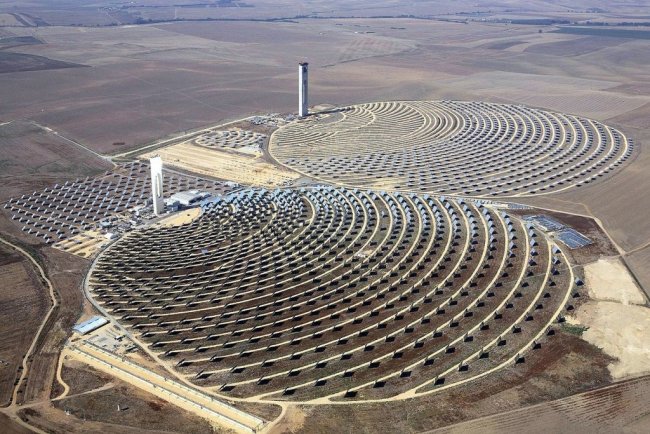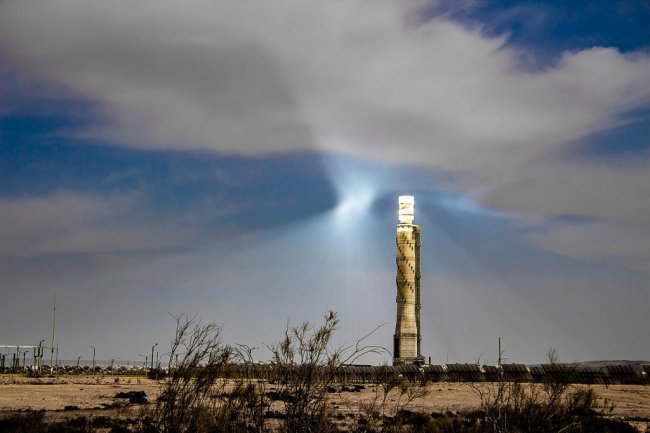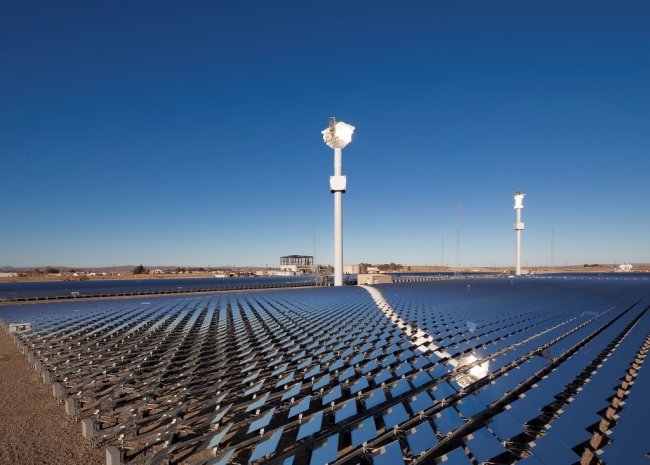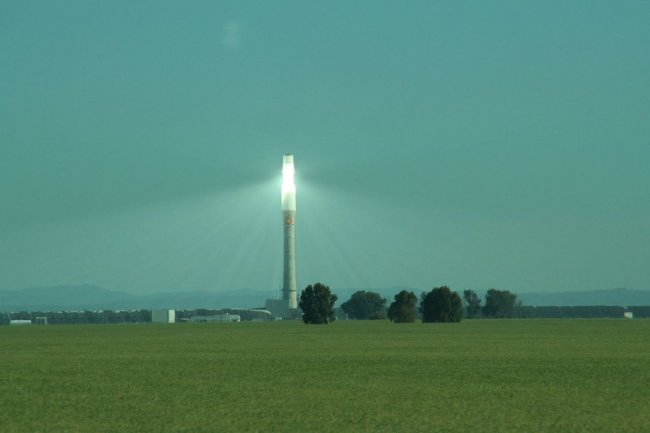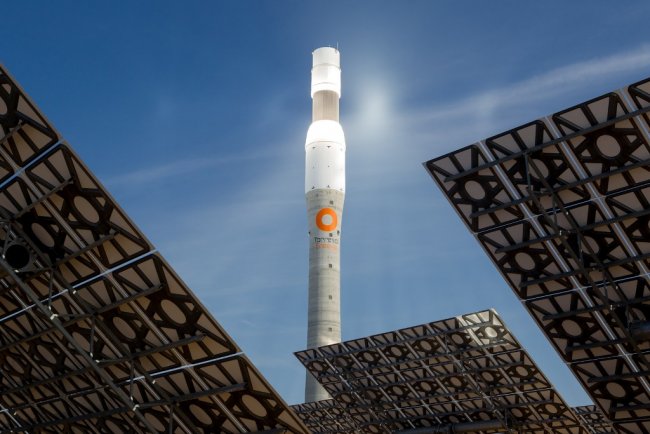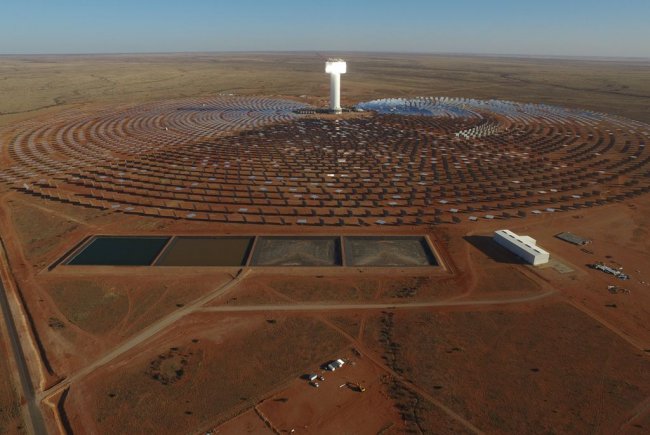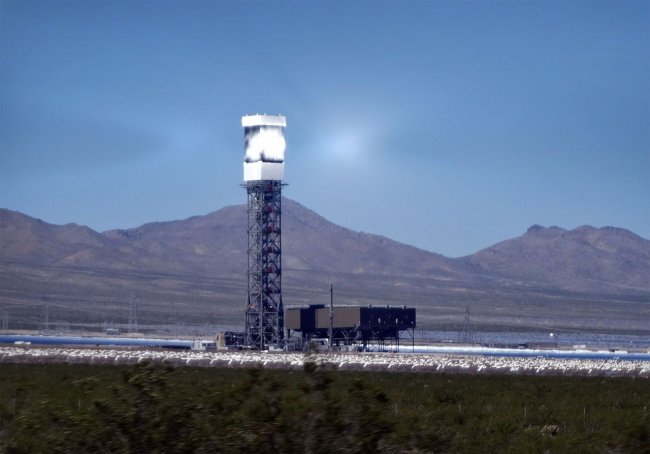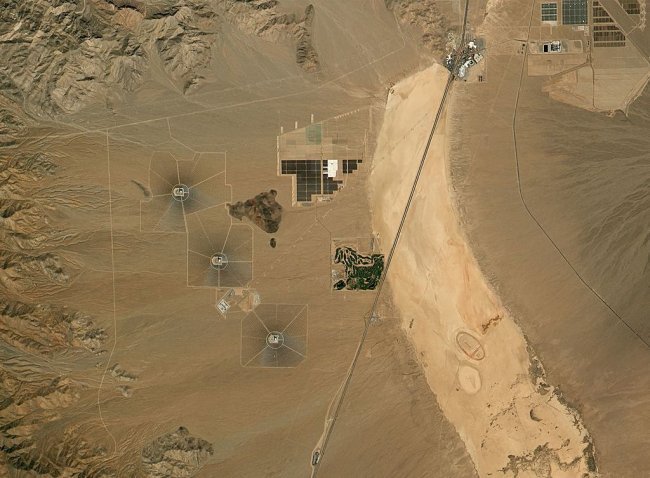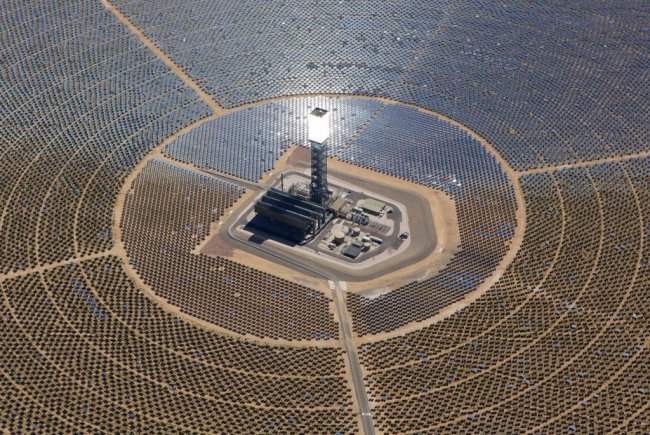Tower thermal solar power plants, solar power concentrating systems
The sun is a source of extremely "clean" energy. Today, all over the world, work on the use of the Sun is developing in many directions. First of all, the so-called small power industry is developing, which mainly includes building heating and heat supply. But serious steps have already been taken in the field of large-scale energy — solar power plants are being created on the basis of photoconversion and thermal conversion. In this article, we will tell you about the prospects of stations from the second direction.
Concentrated Solar Power technology, known worldwide as CSP (Concentrated Solar Power), is a type of solar power plant that uses mirrors or lenses to concentrate large amounts of sunlight into a small area.
CSP should not be confused with concentrated photovoltaics — also known as CPV (concentrated photovoltaics). In CSP, concentrated sunlight is converted into heat, and the heat is then converted into electricity.On the other hand, in CPV, concentrated sunlight is converted directly into electricity via photoelectric effect.
Industrial use of solar concentrators
Solar energy
The sun sends a powerful stream of radiant energy in the direction of the earth. Even if we take into account that 2/3 of it is reflected and scattered by the atmosphere, still the earth's surface receives 1018 kWh of energy in 12 months, which is 20,000 times more than the world consumes in a year.
It is natural that using this inexhaustible source of energy for practical purposes has always seemed very tempting. However, time passed, man in search of energy created a heat engine, blocked rivers, split an atom and the Sun continued to wait in the wings.
Why is it so hard to control his energy? First, the intensity of solar radiation changes during the day, which is extremely inconvenient for consumption. This means that the solar station must have a battery installation or work together with other sources. But this is still not the biggest drawback. Much worse, the density of solar radiation at the earth's surface is very low.
So in the southern regions of Russia, it is only 900 — 1000 W / m2... This is enough only to heat the water in the simplest collectors to temperatures of no more than 80 — 90 ° C.
It is suitable for hot water supply and partly for heating, but in no case for electricity generation. Much higher temperatures are needed here. To increase the flux density, it is necessary to collect it from a large area and transform it from scattered to concentrated.
Energy production with solar concentrating systems
Methods of concentrating solar energy have been known since ancient times.A legend has been preserved about how the great Archimedes, with the help of concave polished copper mirrors, burned the Roman fleet that was besieging it in the 3rd century BC. NS. Syracuse. And although this legend is not confirmed by historical documents, the very possibility of heating in the focus of a parabolic mirror any substance to temperatures of 3500 — 4000 ° C is an indisputable fact.
Attempts to use parabolic mirrors to generate useful energy began in the second half of the 19th century. Particularly intensive work was carried out in the USA, England and France.
An experimental parabolic mirror for using solar thermal energy in Los Angeles, USA (circa 1901).
In 1866, Augustin Mouchaud used a parabolic cylinder to generate steam in the first solar steam engine.
A. Mouchaud's solar power plant, demonstrated at the World Industrial Exhibition in Paris in 1882, made a huge impression on contemporaries.
The first patent for a solar collector was obtained by the Italian Alessandro Battaglia in Genoa (Italy) in 1886. In the following years, inventors such as John Erickson and Frank Schumann developed devices that work by concentrating solar energy for irrigation, cooling and movement.
Solar Engine, 1882
Frank Schumann's solar plant in Cairo
In 1912, the first solar power plant with a capacity of 45 kW was built near Cairo with parabolic-cylindrical concentrators with a total area of 1200 m22 which was used in the irrigation system. Tubes were placed at the focus of each mirror. The sun's rays were concentrated on their surface.The water in the pipes turns into steam, which is collected in a common collector and fed to the steam engine.
In general, it should be noted that this was a period when the belief in the fantastic focusing power of mirrors took hold of many minds. A. Tolstoy's novel "The Hyperboloid of Engineer Garin" became a kind of proof of these hopes.
Indeed, in a number of industries, such mirrors are widely used. On this principle, many countries have built furnaces for melting high-purity refractory materials. For example, France has the largest oven in the world with a capacity of 1 MW.
And what about installations for generating electrical energy? Here scientists have faced a number of difficulties. First of all, the cost of focusing systems with complex mirror surfaces turned out to be very high. Also, as the size of the mirrors increases, the cost increases exponentially.
Also, create a mirror with an area of 500 — 600 m2 technically difficult, and you can get no more than 50 kW of power from it. It is clear that under these conditions the unit power of the solar receiver is significantly limited.
And one more important consideration about curved mirror systems. In principle, quite large systems can be assembled from individual modules.
For current installations of this type see here: Examples of using solar concentrators
Parabolic trough used at the Lockhart Concentrated Solar Power Plant near Harper Lake, California (Mojave Solar Project)
Similar power plants have been built in many countries. However, there is a serious drawback in their work - the difficulty in collecting energy.After all, each mirror has its own vapor generator at the focus, and they are all spread over a large area. This means that the steam must be collected from many solar receivers, which greatly complicates and increases the cost of the station.
Solar tower
Even in the pre-war years, the engineer N. V. Linitsky put forward the idea of a thermal solar power plant with a central solar receiver located on a high tower (tower-type solar power plant).
In the late 1940s, scientists from the State Research Institute of Energy (ENIN) named after V.I. G. M. Krzhizhanovsky, R. R. Aparisi, V. A. Baum and B. A. Garf developed a scientific concept for the creation of such a station. They proposed to abandon the complex expensive curved mirrors, replacing them with the simplest flat heliostats.
The principle of operation of solar power plants from a tower is quite simple. The sun's rays are reflected by multiple heliostats and directed to the surface of a central receiver — a solar steam generator placed on the tower.
In accordance with the position of the Sun in the sky, the orientation of heliostats also changes automatically. As a result, throughout the day, a concentrated stream of sunlight, reflected by hundreds of mirrors, heats the steam generator.
Difference between SPP designs using parabolic concentrators, SPP with disc concentrators, and SPP from a tower
This solution turned out to be as simple as it was original. But the most important thing was that, in principle, it became possible to create large solar power plants with a unit power of hundreds of thousands of kW.
Since then, the tower type solar thermal power plant concept has gained worldwide recognition. Only in the late 1970s, such stations with a capacity of 0.25 to 10 MW were built in the USA, France, Spain, Italy and Japan.
SES Themis solar tower in the Pyrenees-Orientales in France
According to this Soviet project, in 1985 in the Crimea, near the city of Shtelkino, an experimental tower-type solar power plant with a capacity of 5 MW (SES-5) was built.
In SES-5, an open circular solar steam generator is used, the surfaces of which, as they say, are open to all winds. Therefore, at low ambient temperatures and high wind speeds, convective losses increase sharply and efficiency decreases significantly.
Cavity type receivers are now believed to be much more efficient. Here, all surfaces of the steam generator are closed, due to which convective and radiation losses are sharply reduced.
Due to the low steam parameters (250 °C and 4MPa), the thermal efficiency of SES-5 is only 0.32.
After 10 years of operation in 1995 SES-5 in Crimea was closed, and in 2005 the tower was handed over for scrap.
Model SES-5 in the Polytechnic Museum
Tower solar power plants currently in operation use new designs and systems that use molten salts (40% potassium nitrate, 60% sodium nitrate) as working fluids. These working fluids have a higher heat capacity than seawater, which was used in the first experimental installations.
Technological diagram of a modern solar thermal power plant
Modern tower solar power plant
Of course, solar power plants are a new and complicated business and naturally have enough opponents. Many of the doubts they express have quite good reasons, but one can hardly agree with others.
For example, it is often said that large land areas are required to build tower solar power plants. However, the areas where fuel is produced for the operation of traditional power plants cannot be excluded.
There is another more convincing case in favor of tower solar power plants. The specific area of the land flooded by artificial reservoirs of hydroelectric power plants is 169 hectares / MW, which is many times higher than the indicators of such solar power plants. Moreover, during the construction of hydroelectric power plants, very valuable fertile lands are often flooded, and tower SPPs are supposed to be built in desert areas - on lands that are neither suitable for agriculture nor for the construction of industrial facilities.
Another reason for criticism of tower SPPs is their high material consumption. There is even doubt whether SES will be able to return the energy spent on the production of equipment and obtaining materials used for its construction during the estimated period of operation.
Indeed, such installations are material intensive, but it is essential that virtually all materials from which modern solar power plants are built are not in short supply.Economic calculations performed after the launch of the first modern tower solar power plants showed their high efficiency and quite favorable payback periods (see below for examples of economically successful projects).
Another reserve for increasing the efficiency of solar power plants with a tower is the creation of hybrid plants, in which solar plants will work together with conventional thermal plants of traditional fuel. At the combined plant, in the hours of intense solar radiation, the fuel plant reduces its power and " accelerates' in cloudy weather and at peak loads.
Examples of modern solar power plants
In June 2008, Bright Source Energy opened a solar energy development center in Israel's Negev desert.
On the site it is located in the Rotema industrial park, over 1,600 heliostats have been installed that follow the sun and reflect light onto a 60-meter solar tower. The concentrated energy is then used to heat the boiler at the top of the tower to 550°C, generating steam that is sent to a turbine where electricity is generated. Power plant capacity 5 MW.
In 2019, the same company built a new power plant in the Negev desert —Ashalim… Toya Consisting of three sections with three different technologies, the plant combines three types of energy: solar thermal energy, photovoltaic energy and natural gas (hybrid power plant). The installed capacity of the solar tower is 121 MW.
The station includes 50,600 computer-controlled heliostats, enough to power 120,000 homes. The height of the tower is 260 meters.It was the tallest in the world, but was recently surpassed by the 262.44-meter solar tower at the Mohammed bin Rashid Al Maktoum Solar Park.
A power plant in the Negev desert in Israel
In the summer of 2009, the American company eSolar built a solar tower Sierra Solar Tower for a 5 MW power plant located in Lancaster, California, about 80 km north of Los Angeles. The power plant covers an area of about 8 hectares in a dry valley west of the Mojave Desert at 35°N latitude.
Sierra Solar Tower
As of September 9, 2009, based on the example of existing power plants, it was estimated that the cost of building a tower solar power plant (CSP) is US$2.5 to US$4 per watt, while the fuel (solar radiation) is free. Thus, the construction of such a power plant with a capacity of 250 MW costs from 600 to 1000 million US dollars. This means from 0.12 to 0.18 dollars / kWh.
It was also found that new CSP plants can be economically competitive with fossil fuels.
Nathaniel Bullard, an analyst at Bloomberg New Energy Finance, estimated that the cost of electricity generated by the Iwanpa solar power plant, launched in 2014, is lower than electricity generated by Photovoltaic power plant, and is almost the same as electricity from a natural gas power plant.
The most famous of the solar power plants at the moment is the power plant Gemasolar with a capacity of 19.9 MW, located west of the city of Esia in Andalusia (Spain). The power plant was inaugurated by King Juan Carlos of Spain on October 4, 2011.
Gemsolar power plant
This project, which received a grant of 5 million euros from the European Commission, uses technology tested by the American company Solar Two:
-
2,493 heliostats with a total area of 298,000 m2 use glass with better reflectivity, whose simplified design reduces production costs by 45%.
-
A larger thermal energy storage system with a capacity of 8,500 tons of molten salts (nitrates), providing an autonomy of 15 hours (approximately 250 MWh) in the absence of sunlight.
-
Improved pump design that allows salts to be pumped directly from storage tanks without the need for a sump.
-
Steam generation system including forced recirculation of steam.
-
Steam turbine with higher pressure and higher efficiency.
-
Simplified molten salt circulation circuit, halving the number of valves required.
The power plant (tower and heliostats) covers a total area of 190 hectares.
SPP Gemasolar Solar Tower
Abengoa has built Hey sunny one in South Africa — a power station with a height of 205 meters and a capacity of 50 MW. The opening ceremony took place on August 27, 2013.
Hey sunny one
Ivanpah Solar Electric Generating System — a 392 megawatt (MW) solar power plant in California's Mojave Desert, 40 miles southwest of Las Vegas. The power plant was commissioned on February 13, 2014.
Ivanpah Solar Electric Generating System
The annual output of this SPP covers the consumption of 140,000 households. Installed 173,500 heliostat mirrors focusing solar energy onto steam generators located on three central solar towers.
In March 2013, an agreement was signed with Bright Source Energy to build a power plant Burnt in California, consisting of two 230 m towers (250 MW each), commissioning scheduled for 2021.
Other operational solar tower power plants: Solar Park (Dubai, 2013), Nur III (Morocco, 2014), Crescent Dunes (Nevada, USA, 2016), SUPCON Delingha and Shouhang Dunhuang (Kathai, both 2018.), Gonghe, Luneng Haixi and Hami (China, all 2019), Cerro Dominador (Chile, April 2021).
An innovative solution for solar energy
Because this technology works best in areas with high insolation (solar radiation), experts predict that the biggest growth in the number of tower solar power plants will be in places like Africa, Mexico and the southwestern United States.
It is also believed that concentrated solar energy has serious prospects and that it can provide up to 25% of the world's energy needs by 2050. Currently, more than 50 new projects of this type of power plants are being developed in the world.

